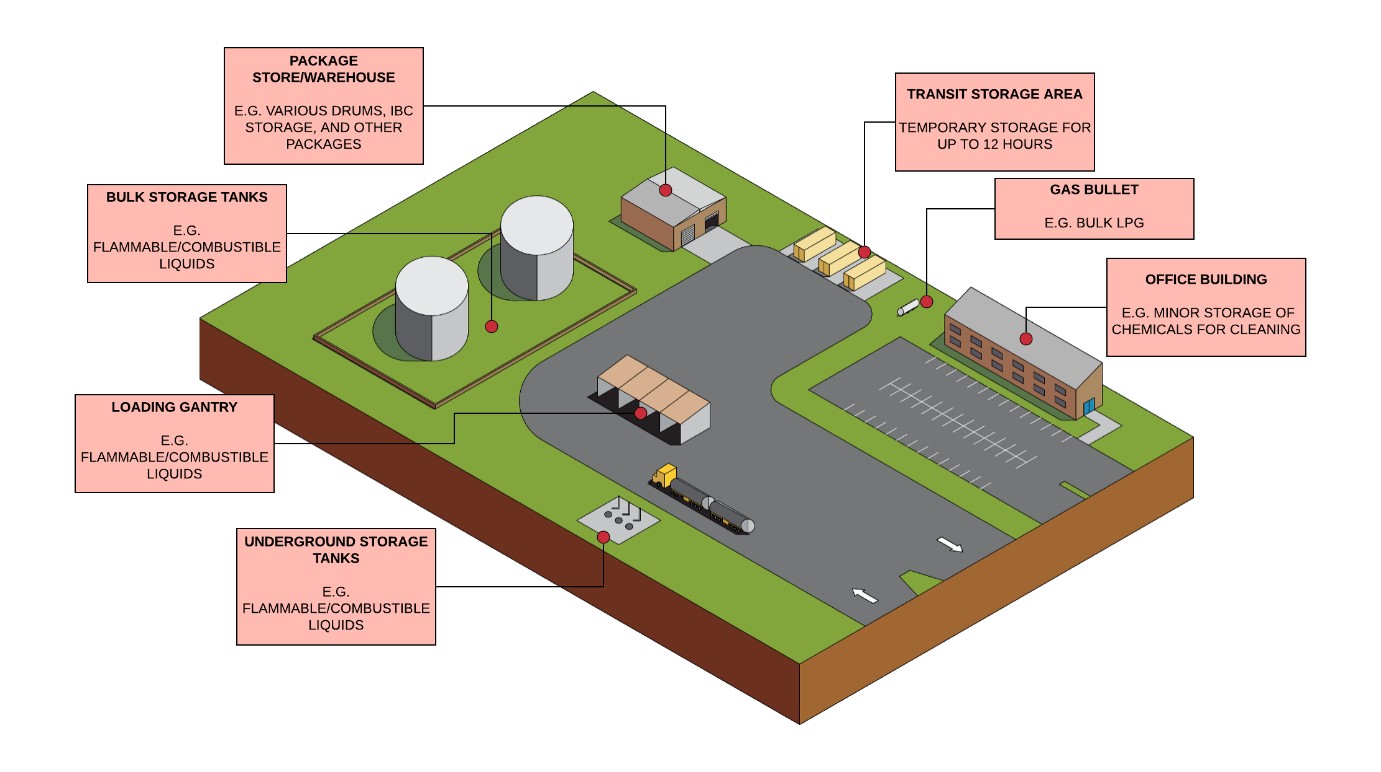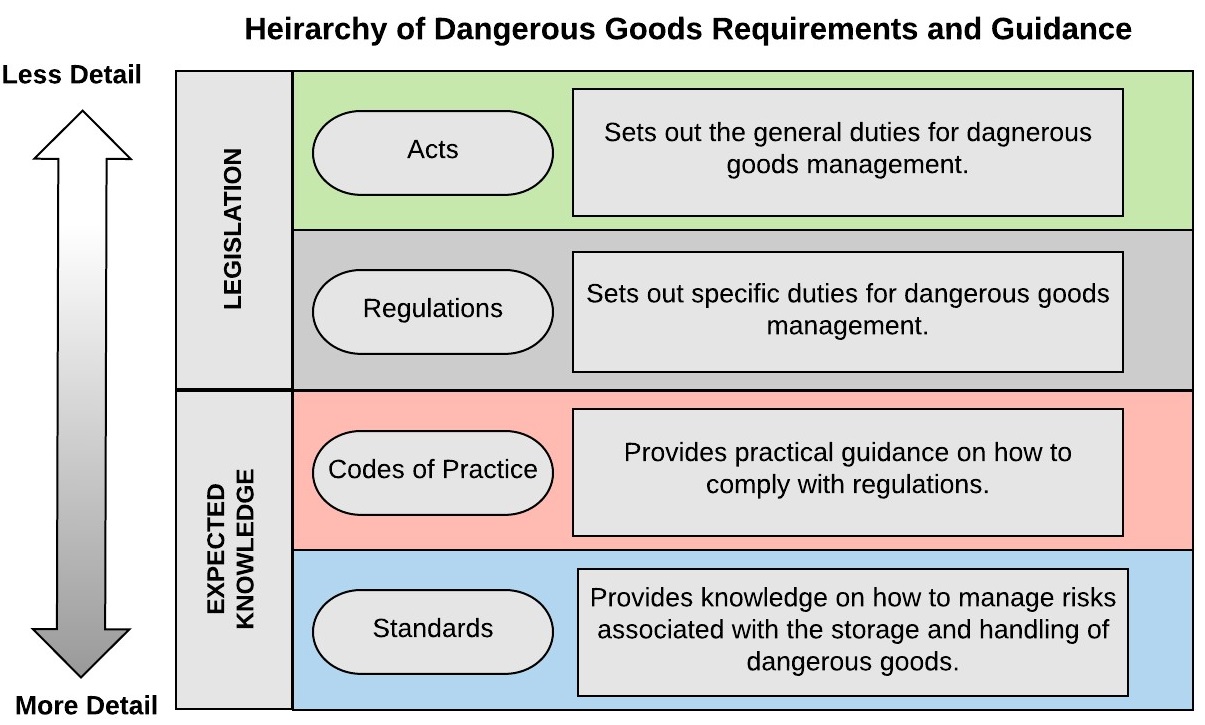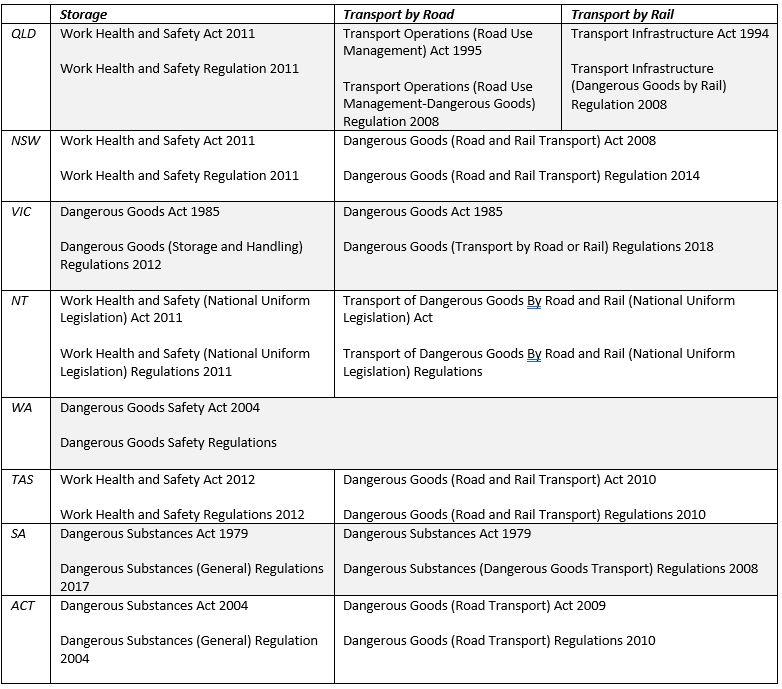Dangerous goods are found in virtually every home and business in Australia. They can be anything from the flammable aerosols used as deodorants, to aggressive industrial acids. Despite being common, dangerous goods pose major safety risks to people and the environment if they are mismanaged.
Understanding and properly managing the dangerous goods in your facility has never been more important. Following several major incidents, dangerous goods have recently been receiving increased attention and increased penalties for non-compliances. This article has been written by TfA Project Group, leading Dangerous Goods Consultants, to address the following questions:
1. What are dangerous goods?
2. What are your obligations for dangerous goods management
3. Where should you start if you want to improve your dangerous goods management
What are Dangerous Goods?
Dangerous goods generally fall under 9 possible classes, as defined in the Australian Dangerous Goods Code, with each class having its own storage and handling requirements. The classes are as follows:
- Class 1 – Explosives
- Class 2 – Gases
- Class 3 – Flammable Liquids
- Class 4 – Flammable Solids
- Class 5 – Oxidising Substances and Organic Peroxides
- Class 6 – Toxic and Infectious Substances
- Class 7 – Radioactive Substances
- Class 8 – Corrosive Substances
- Class 9 – Miscellaneous Substances
Some goods may not fulfill the criteria of any of the classes but are still considered dangerous goods under the relevant legislation (e.g. diesel).
The prevalence of dangerous goods today cannot be understated. The table below provides some examples of commonly used dangerous goods for various applications.

Table 1: Common dangerous goods in select applications [1]
Dangerous goods storage and handling can take many forms, and the selected approach can be as important as the species of dangerous goods being stored. Figure 1 provides an example facility that show many of the common means of storing dangerous goods.

Figure 1: Dangerous Goods Storage in Example Facility
What are Your Obligations?
The importance of managing dangerous goods is recognised by legislation across Australia. In October of 2019, new Victorian penalties were introduced for the mismanagement of dangerous good. Under new legislation, illegal storage and handling of dangerous goods could result in a 10-year jail term for individuals, and a $6.4 million fee for body corporates.
The overarching structure of the legislation is identical across the country, as summarised in the figure below.

Figure 2: Hierarchy of Dangerous Goods Requirements and Guidance
Australian Dangerous Goods Legislation
It is the responsibility of all person’s conducting a business or undertaking to comply with the relevant legislative requirements for dangerous goods management. These requirements will vary depending on the specifics of your facility. For example, in Victoria small quantities of many dangerous goods are not subject to the regulation if they are for residential use. On the opposite end of the spectrum, sites storing massive quantities of dangerous goods may need to register as a major hazard facility and would receive additional oversight.
The laws regarding dangerous goods vary amongst states and territories, although there are some commonly adopted national guidelines (e.g. The Australian Dangerous Goods Code). The law is stipulated at the highest level through the acts relevant to each state and territory (e.g. The Dangerous Goods Act 1985 in Victoria). Regulations applicable to each state and territory are made under the acts (e.g. Dangerous Goods (Storage and Handling) Regulations 2012 in Victoria). To complicate matters, dangerous goods which travel across state borders must meet the requirements of all relevant jurisdictions.
The table below provides an overview of the most prevalent legislation applicable to each state and territory for the management of dangerous goods. In some cases, additional requirements will apply for particular dangerous goods (e.g. specific legislation for explosives or radioactive substances), specific modes of transport (e.g. transport over air or sea) or other legislation (e.g. workplace health and safety regulations).

Table 2: Examples of applicable regulation across Australia
Standards and Codes of Practice
The legislation often refers to codes of practice and standards for guidance on the management of dangerous goods. Compliance with standards and codes of practice is generally not required by law. However, they are valuable as practical advice for meeting your legal requirements. They represent the baseline level of acceptable practice and should followed unless there is an equal or better protection in place. If a standard is not followed without properly assessing and controlling the resulting risks, then the non-compliance can be used as evidence of dangerous goods mismanagement.
There are many standards applicable to the management of dangerous goods. Depending on the specifics of your facility, assessing and achieving compliance with all the relevant standards can be a complex undertaking. Some standards cover entire classes, whereas others cover only specific chemical species (e.g. ammonia) or dangerous goods held in specific conditions (e.g. cryogenic storage).
Where Do I Start?
The first step to best practice dangerous goods management is to understand your facility and its contents. The following 3 questions provides you with a strong start to understanding your dangerous goods requirements:
1. What dangerous goods you are storing?
2. How much are you storing of each of your dangerous goods?
3. How you are storing/handling your dangerous goods?
Many facilities will have a site manifest that clearly identifies the answers to all three of these questions.
What are you storing?
Each dangerous good stored on your site must have an SDS (Safety Data Sheet) that details it’s physical and chemical information. If this information is not available, then it is recommended that a dangerous goods audit be conducted immediately.
Whilst not always feasible, if a dangerous good pose a significant risk, it is worth considering either:
- Eliminating the storage of dangerous goods where possible; or alternatively
- Substituting dangerous goods for a less harmful substance.
How much are you storing?
Dangerous goods inventories should be kept to a minimum. That said, thousands of facilities around Australia require storage of large amounts of dangerous goods for regular use. Dangerous goods quantity will have a major impact on the requirements for compliance with legislation and in some cases will dictate your options for storage and handling.
How are you storing/handling your dangerous goods?
The standards clearly delineate between various dangerous goods storage methods. Requirements for compliance will vary depending on factors such as:
- Are the dangerous goods in packages or in tanks?
- Are the dangerous goods stored above ground or below ground?
- Is the dangerous goods storage permanent or temporary?
Whilst no two facilities are identical, some of the most common non-compliances include:
- Storing incompatible chemicals together
- Not having the right electrical equipment for your zone
- Out of date Safety Data Sheets
- Not having an up to date manifest plan when required
- Excessive quantities of chemicals stored for a storage method
- Problems with storage area (e.g. ventilation)
- Fire protection
- Inadequate labelling of storage containers
Next Steps
Identifying your facilities dangerous goods storage and handling requirements requires a detailed understanding of the legislation, codes of practice, and relevant standards. It strongly recommended that expert advice is sought if there is any uncertainty on whether you are correctly managing your dangerous goods. A dangerous goods expert will be able to identify non-compliances and work with you to manage the risks in your facility.
TfA is a member of the Australasian Institute of Dangerous Goods Consultants and actively apply our expertise to projects where dangerous goods are involved.
We can help you identify and classify dangerous goods within your facility, conduct audits, undertake assessments and reports for authoritative bodies and incorporate changes into your existing designs.
Any queries in relation to this matter, please contact Ben Phillips, Director who would be happy to discuss further.
Telephone – 1300 794 300
Email – enquiry@tfa.com.au
Website – www.tfa.com.au
References
WorkSafe Victoria, “Commonly used dangerous goods,” 2019. [Online]. Available: https://www.worksafe.vic.gov.au/commonly-used-dangerous-goods
Minister for Workplace Safety, “Media Release (New Dangerous Goods Laws Pass Parliament),” 2019. [Online]. Available: https://www.premier.vic.gov.au/new-dangerous-goods-laws-pass-parliament
National Transport Commission, “Australian Code for the Transport of Dangerous Goods by Road & Rail – Version 7.6,” 2018
Legislation as described in Table 1.



